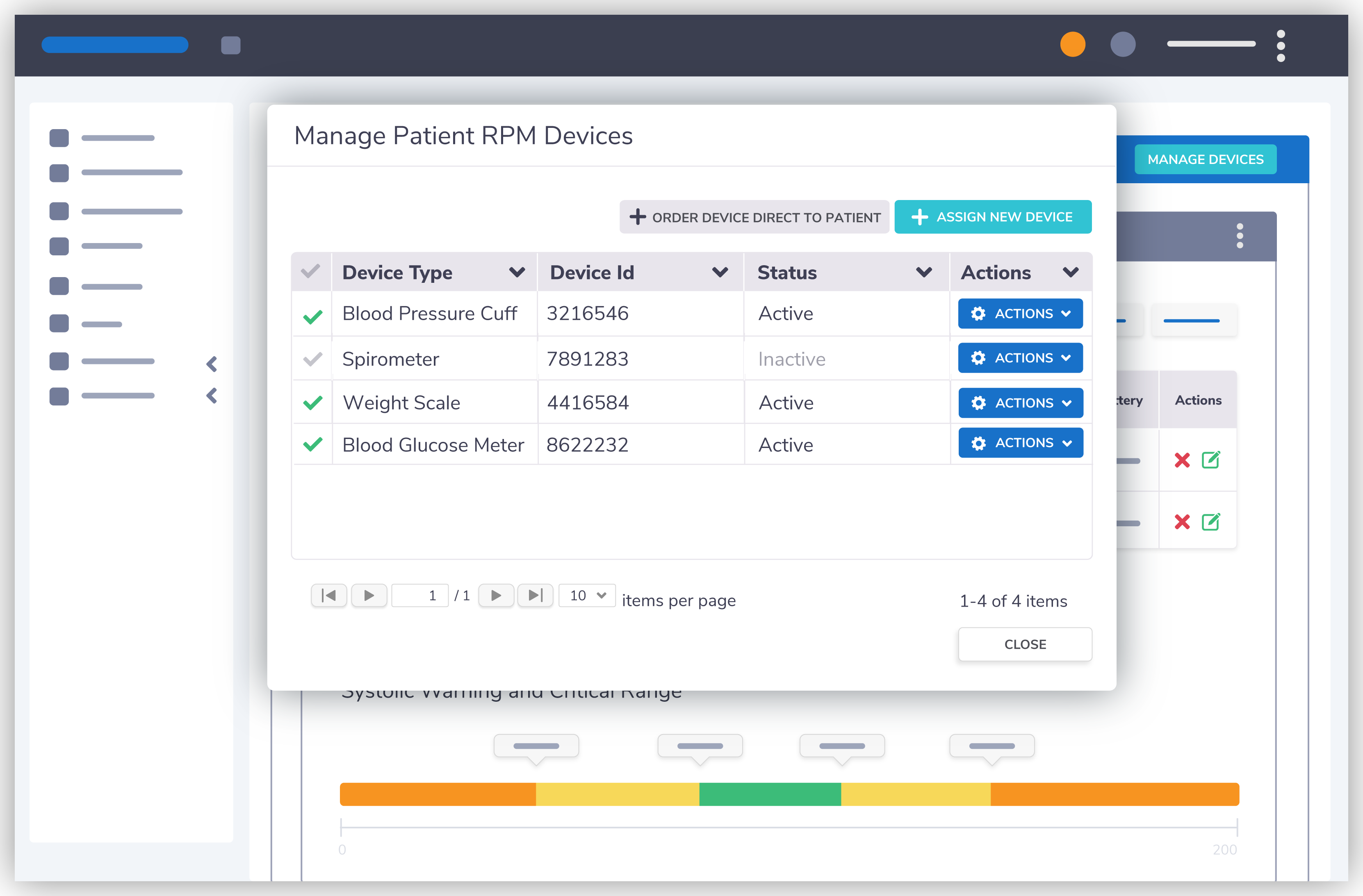Leading Remote Patient Monitoring Platform: Streamline Healthcare Procedures
Leading Remote Patient Monitoring Platform: Streamline Healthcare Procedures
Blog Article
The Future of Medical Care: Remote Patient Keeping An Eye On Simplified
As healthcare proceeds to evolve, one area that holds tremendous guarantee is remote person tracking. With an emphasis on improving patient outcomes and streamlining healthcare delivery, remote surveillance is poised to reinvent the industry.
Advantages of Remote Patient Surveillance
Remote individual surveillance presents a wide variety of benefits for both health care providers and clients alike. In addition, remote person surveillance enhances the overall high quality of care by giving an extra all natural and thorough view of people' wellness standing past traditional in-person sees.
Furthermore, remote client surveillance can lead to improved patient outcomes and contentment. Individuals can take pleasure in the ease of obtaining treatment in the convenience of their own homes while still recognizing that their health is being carefully monitored. This can cause boosted patient engagement and adherence to treatment plans, eventually resulting in better health and wellness end results. Furthermore, remote tracking can decrease the requirement for constant medical facility visits, decreasing healthcare expenses for both companies and individuals. Generally, the benefits of remote client monitoring are clear, making it a valuable tool in modern-day healthcare shipment.
Technology Driving Remote Tracking
In the world of modern medical care, technological improvements play a critical function in driving the evolution and efficiency of remote individual surveillance. The integration of cutting-edge innovations such as wearable gadgets, mobile applications, and cloud-based platforms has actually transformed the method doctor from another location keep an eye on and manage individual health - best remote patient monitoring software. These innovations allow constant real-time surveillance of essential indicators, drug adherence, and various other vital health data, allowing for timely interventions and customized care plans
One secret technology driving remote surveillance is the Net of Things (IoT), which makes it possible for smooth connection in between clinical devices and healthcare systems. IoT devices such as smartwatches and wireless sensors collect and send client information to central systems, facilitating remote monitoring from throughout the globe. Expert system (AI) and artificial intelligence algorithms additionally enhance remote tracking by evaluating substantial amounts of person information to find patterns, predict wellness fads, and alert medical care providers to potential concerns.
Influence on Healthcare Delivery
With the assimilation of innovative modern technologies driving remote client surveillance, the impact on healthcare distribution is becoming significantly extensive and transformative. Remote individual surveillance enables healthcare providers to use more individualized and positive like clients, resulting in improved wellness end results and decreased healthcare facility admissions. By from another location tracking important indications, signs, and medication adherence, medical care specialists can step in early, preventing issues and enhancing the overall top quality of treatment.
Furthermore, remote monitoring improves access to medical care solutions, particularly for individuals in rural or underserved locations. Clients can get continuous monitoring and assistance from their homes, removing the need for constant in-person visits. This not just conserves time and minimizes prices for both discover this clients and health care facilities but likewise minimizes the risk of exposure to infectious conditions, a crucial factor to consider in the existing healthcare landscape.
In addition, remote client monitoring makes it possible for health care carriers to much better prioritize and designate resources care based upon real-time data. By recognizing risky individuals and intervening quickly, medical care distribution becomes more efficient and reliable, inevitably resulting in an extra sustainable and patient-centered healthcare system.
Improving Patient Results

In addition, RPM allows for proactive administration of chronic conditions, reducing the probability of acute exacerbations and hospital readmissions. People gain from boosted ease and convenience, as they can get care in their very own homes while remaining attached to their doctor. This continual monitoring not only boosts client fulfillment but additionally fosters a sense of empowerment and involvement in their own wellness monitoring.
Future Trends in Remote Surveillance
Embracing advanced modern technologies in remote client monitoring is forming the future landscape of healthcare shipment. The future trends in remote surveillance are anticipated to change the method medical care is provided, making it extra effective and patient-centric. One substantial trend is the increased use wearable devices and sensors to collect real-time data, allowing doctor to keep track of people continually without the demand for frequent in-person visits. These tools can track essential indicators, medicine adherence, and task levels, providing a detailed sight of the individual's health status.

Additionally, telehealth systems are ending up being more sophisticated, permitting online appointments, remote diagnosis, and remote client keeping an eye on all in one integrated system (remote patient monitoring platform). This alternative method to remote surveillance is streamlining medical care distribution, enhancing client fulfillment, and ultimately, enhancing total top quality of treatment
Verdict
In final thought, remote individual tracking provides various benefits in healthcare delivery, driven by improvements in modern technology. It has the potential to boost client end results and revolutionize the means healthcare is provided. Future fads in remote monitoring will remain to form the landscape of healthcare, giving opportunities for even more reliable and tailored person treatment.
Remote individual monitoring provides a wide variety of benefits for both health care carriers and individuals alike. visit their website Additionally, remote individual surveillance enhances the total top quality of treatment by providing an extra thorough and holistic view of clients' health condition past conventional in-person check outs.
Furthermore, remote individual monitoring can lead to improved client results and complete satisfaction. Remote person surveillance allows health care carriers to use more customized and aggressive treatment to individuals, leading to enhanced wellness end results and reduced health center admissions. Remote patient tracking (RPM) plays a considerable role in enhancing client outcomes by offering continuous, real-time data that makes it possible for health care carriers to step in quickly and readjust therapy plans as needed.
Report this page